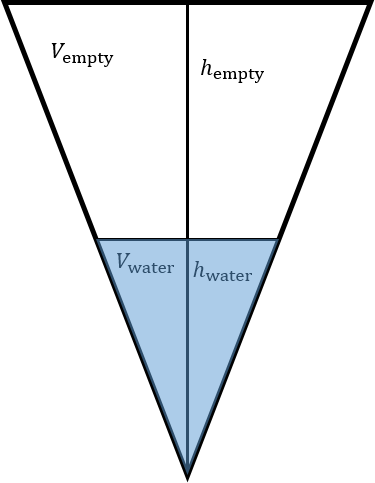Cups A and B are cone shaped and have heights of #25 cm# and #15 cm# and openings with radii of #7 cm# and #3 cm#, respectively. If cup B is full and its contents are poured into cup A, will cup A overflow? If not how high will cup A be filled?
1 Answer
Cup A will be filled
Explanation:
First, we calculate the volume of cup B.
Both the height and radius of cup A are greater than those of cup B, so
The image below represents cup A with cup B's full content.
![enter image source here]
( )
)
The 'water triangle' is similar to cup A, so
Cup A will therefore be filled

